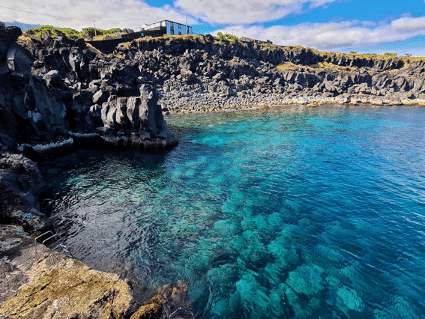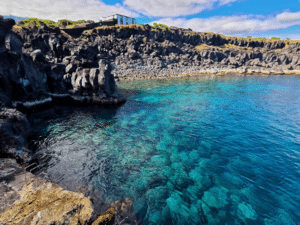Part of the Landscape of the Pico Vineyard Culture, classified as a UNESCO World Heritage Site in 2004.
Its original organization was dominated by some manorial-type houses and its production complexes consisted of stills and warehouses next to a port and a rola-pipas, surrounded by vast vineyards and fig trees. In this settlement, there is a tidal well that ensured the supply of water primarily for the operation of the stills. Its chapel (17th century) – dedicated to Nossa Senhora dos Milagres – is located in the centre of the settlement. Every year on February 2nd, a pilgrimage takes place from the Church of Santa Luzia passing through Lajido and ending in this settlement, evoking the volcanic eruption of 1718. In the post-phylloxera period, small traditional cellars, mostly with one floor, proliferated on the periphery of the central nucleus and now serve mostly as seasonal housing.
Today, it is one of the main points of interest in the Municipality of Madalena, where you can visit the famous rock formation in the shape of a dog’s head, hence the name “Cachorro,” walk along the walkway between the rock formations, and enjoy the bathing area, accessed through the irregular rola-pipas.

